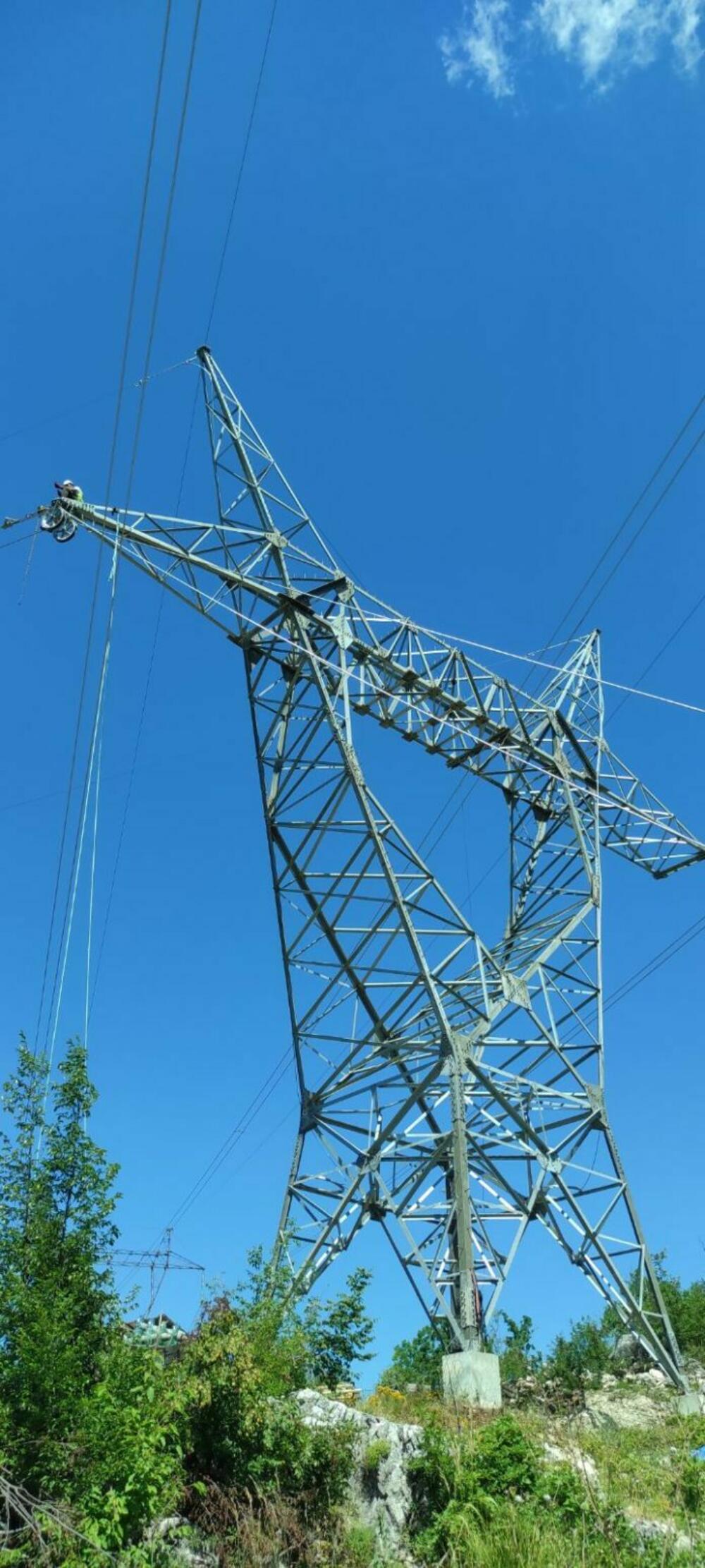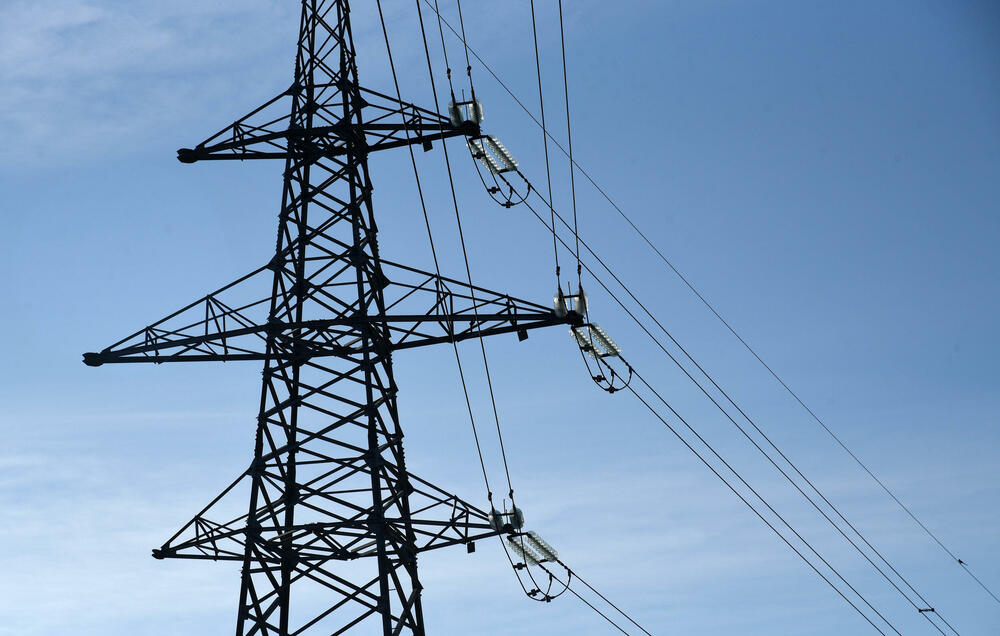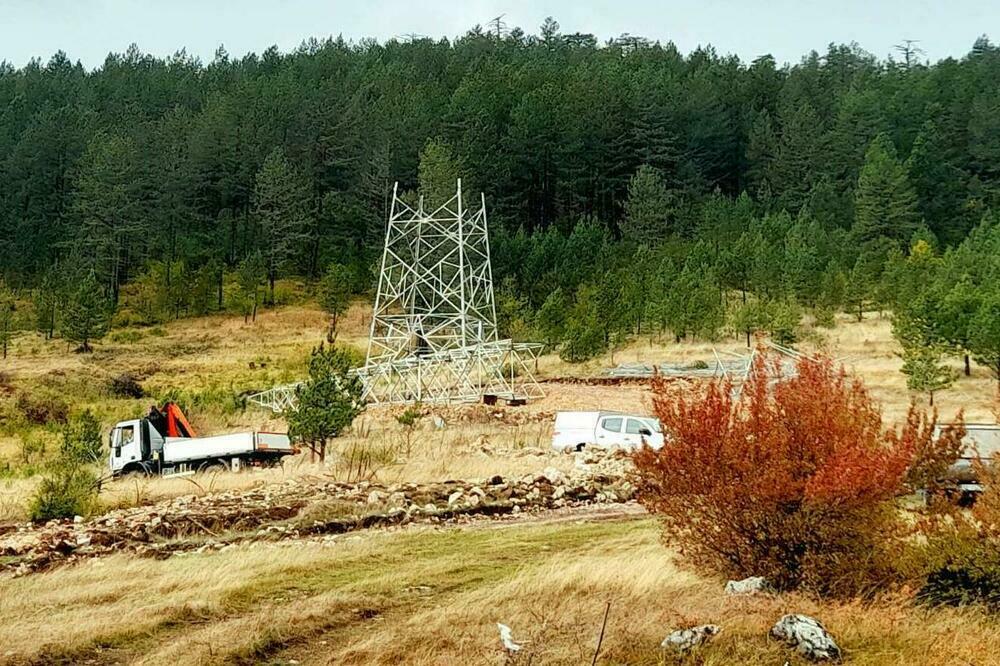In order for the transmission power network to be able to accept more than 30 new solar and wind power plants, which in recent years have received urban planning technical conditions (UTU), it is necessary to strengthen the transmission network, which can take more than a decade, and these investments would be measured by several hundred million euros, it was announced to "Vijesta" from the Montenegrin Electric Transmission System (CGES), a majority state company that manages the transmission power network.
Back in 2013, CGES asked the then Ministry of Ecology, Spatial Planning and Urbanism to suspend the issuance of new UTUs for the construction of high-power power plants from renewable sources, but the Government continued to issue them.
So far, over 40 requests for UTU have been submitted, mostly for large solar power plants, and previous governments have issued 30 such conditions for the construction of power plant facilities with a total installed capacity of about 4.000 megawatts (MW), all existing production capacities are about 1.000 MW, which corresponds to the current capacities transmission networks. Investors will have to wait for connection until they receive an analysis on the possibility of connection.
Problem Article 218c
The problem arose due to Article 218c of the Law on Spatial Planning and Building Construction, which provides for the issuance of UTU for energy facilities without planning and strategic planning and without the possibility of influencing the competent Ministry of Energy and CGES.
This company told "Vijesta" that they have significant plans to improve the transmission infrastructure, not only to increase the capacities for the integration of renewable sources, but also to ensure safer and more efficient operation of the system, but the problem is that the construction of the network takes much longer. due to permits, expropriations, solving property problems,... than it takes time to build a large solar power plant.
"The current five-year investment plan is at the level of almost 200 million euros. However, it is necessary to know that the construction of the network is significantly slower than the construction of a solar power plant because it involves more complex and demanding activities, among which is the provision of spatial planning and property-legal preconditions over long distances, which are the responsibility of other state authorities. If we are talking about connecting 4.000 MW power plants, strengthening the transmission network, it is certain that it will require the construction or reconstruction of several hundred kilometers of transmission lines, the construction of which may take more than a decade, and the value of which is measured in hundreds of millions of euros. Nevertheless, bearing in mind the total consumption of Montenegro, which ranges between 200 and 550 MW, the existing installed capacities, which are at the level of about 1000 MW, and the fact that the surrounding countries are planning or have already built significant capacities in renewable sources, it is realistic to expect that a significant number of the mentioned 30 projects will not be implemented, bearing in mind all the challenges that accompany such projects", they stated from CGES.
Investors should wait for the analysis for connection
When asked by "Vijesti" what would happen if an investor, who has UTU conditions and permits, builds his own power plant and CGES does not have the possibility to connect it to the grid, and whether that investor could sue for compensation from CGES or the State, from this company, they state that it will be resolved with a document called the analysis of connection possibilities.

"In accordance with the Law, after receiving a proper request for connection, CGES is obliged to perform an Analysis of the possibility of connection, which, among other things, should determine what needs to be done, that is, where it is necessary to strengthen the transmission network. The law adopted the principle of 'regatta', so investors who first submitted proper requests for connection have an advantage. After that, CGES and the investors sign the Agreement on the construction of infrastructure for connection and connection, which states the conditions before the implementation of which it is not possible to connect the power plants in question. For certain conditions from these contracts, CGES was not able to specify and commit to exactly specified deadlines, primarily due to known problems in the implementation of infrastructure projects, but the investors, by signing the contract, showed understanding and accepted those circumstances," stated CGES. .
The increase in capacity would be financed by investors, not consumers
The construction of new transmission capacities of the energy system would be financed from fees for connection and use of the transmission system, which would be paid by investors, owners of new power plants. However, the problem is time, the construction of a large solar power plant after obtaining permits could be installed in less than 12 months, while the construction of the transmission infrastructure would take several years.
The investor completely independently finances the construction of the so-called "internal installations" from the power plant to the connection point, while the connection infrastructure from the connection point to the existing transmission system can be financed by the investor or CGES.
"It is usual for the investor to build the connection infrastructure, who thus has control over the dynamics of the construction of the entire project. In case we have more users of the subject infrastructure for connection, or if without that infrastructure the functioning of the system would be impaired, CGES is obliged to purchase the subject infrastructure from the investor within 6 months from the date of obtaining the use permit (or other act of the competent authority), in a maximum of 20 annual annuities (installments). In addition to the connection infrastructure and internal installations, due to the connection of a large number of power plants, it is certain that it will also require the strengthening of the transmission network in the rest of the system, which is not directly related to the connection of the power plant itself. Strengthening the transmission network is an obligation of CGES, and for financing purposes, the Law provides that investors pay fees for connection to the transmission system, the value of which is regulated by the valid Methodology and the Decision on determining the fee for connection", they stated from CGES.

In addition to the connection fee paid by investors, the legal and regulatory framework also provides for the payment of a fee for the use of the transmission system after the connection of new power plants.
"In this way, investors, in addition to participating in covering the costs for creating conditions in the connection system, also participate in covering the justified costs that serve for the functioning of the transmission system, which are approved by the Regulatory Agency for Energy and Regulated Utilities. As for the impact of the connection of new power plants on electricity consumers, and it is worth mentioning, also on electricity producers who are already connected to the transmission system, our expectation is that there will be a reduction in the fees that current users pay for using the transmission system", they stated. from CGES.
If there are more solar, large hydropower plants are also needed
The problem is that the application of Article 218c conditions the immediate reservation of transmission capacities for the connection of these large solar power plants, which belong to the so-called unstable energy sources, which makes it impossible to further plan the development of energy and endangers the development of new production capacities planned by the EPCG, which belong to the so-called stable and base power plants which are also needed to balance the energy system when the sun goes down.
The more solar power plants there are, the more sources of electricity from power plants with uniform production are needed to keep the system stable.
"It should be taken into account that the construction of unstable sources significantly reduces the security of supply and additionally imposes the obligation to simultaneously plan the development of stable sources, as well as system regulation, which to a large extent justifies the need for the construction of large hydropower plants", it was stated in the information on the state of the energy sector, which was recently adopted by the Government.
Bonus video:




